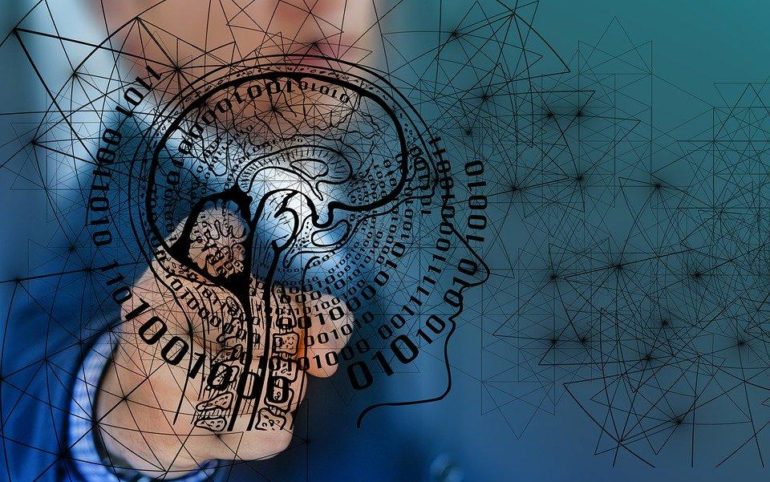Artificial intelligence has been a sector to watch during the pandemic. The enterprise has been seeking new routes to efficiency, organizations with an abundance of furloughed or fired workers have bandwidth crunches, and some companies may have used the hardships of the past year to clean house with the intent of hiring fresh using new technology-driven strategies.
AI has been touted as a possible solution to all of these problems. It’s also a tool that can help unlock the potential of adjacent technologies and, at its most evolved, potentially reshape how business is done.
What follows are predictions informed by a panel of experts who have been watching the space for years. The top line here is that machine learning and AI are finally beginning to penetrate mainstream organizations and will become increasingly commonplace and, in some deployments, crucial in 2021 as the pandemic winds down and businesses reemerge with new outlooks and structures.
Enterprise AI predictions for 2021
Hiring and managing employees
Whether a protracted recession is in the offing or not, there has been a lot of housecleaning during the pandemic and there’s bound to be renewed focus on hiring in 2021. I caught up with Kamal Ahluwalia, President of AI talent management firm Eightfold AI, for some reflections on the changing dynamic of work and the new pressures and opportunities when it comes to personnel.
“The future of work is diverse and remote work will accelerate the trend,” says Ahluwalia. “As many have noted, the workplace will never be the same after COVID-19 and a significant portion of the workforce may continue to work remotely. Beyond work, the impact on hiring itself can’t be overstated: talent can be recruited from anywhere and everywhere, opening up new possibilities across the board.”
As you can imagine, Ahluwalia sees AI playing a critical role in those hiring initiatives.
“AI will be critical to this, enabling the processing of a large volume of candidates and giving everyone a fair chance of getting hired. Geographic boundaries and even sovereign borders will no longer matter when searching for the right talent, you just need the right tools to do so. With new AI tools, people can be hired anywhere to do the job everywhere.”
That growing geographical pool of talent will potentially be accompanied by a new appreciation for what workers can bring to the table beyond their standard resume skills.
“Companies will learn how to use AI to understand an individual’s capabilities (not just skills) and start hiring for potential,” says Ahluwalia. “A college degree is still important but perhaps not as much as it once was. In 2021, companies will increasingly look at job requirements and ask what is really needed to do the work. Proven and potential capability will be paramount, and equally so in many cases. This will open up new opportunities for many people, including military veterans and professionals switching industries.”
Ahluwalia sees the trend extending to government, as well: “2021 could be the year that the public sector takes AI applications seriously – implementing newer technology to shift away from antiquated systems to address talent acquisition, employee experience, and D&I.”
AI isn’t getting easier, which will lead to a new role in the enterprise
Ryohei Fujimaki, Ph.D., Founder & CEO of dotData, a leader in AutoML 2.0 software to help accelerate AI/ML development, points to a false promise in some user-friendly enterprise AI offerings and suggests a more satisfying solution.
“As the need for additional AI applications grows, businesses will need to invest in technologies that help them accelerate and democratize the data science process. This has given rise to what some call “no-code” AI. Many of these “no-code” platforms are workflow-driven, visual drag-and-drop tools (a.k.a. visual programming) that claim to help make AI easier for non-technical people.”
But if it seems too good to be true, that’s because it is, explains Fujimaki.
“The problem is that although simple workflows are easy to build and conceptualize, the reality is that most AI/ML models require large, very complex, and sophisticated workflows that quickly become unwieldy and create a whole new set of challenges of their own. In fact, the vast majority of the work that data scientists must perform is often associated with the tasks that precede the selection and optimization of ML models such as feature engineering — the heart of data science. This means that organizations will need to look for new, more sophisticated AutoML 2.0 platforms that enable true no-code end-to-end automation, from automatically creating and evaluating thousands of features (AI-based feature engineering) to the operationalization of ML and AI models — and all the steps in between. In 2021 we will see the rise of AutoML 2.0 platforms that take “no-code” to the next level and finally begin to deliver on the promise of “one-click” no-code development with an environment that automates 100% of the workflow.”
Complementing the rise of no-code will be a heightened call for a new class of AI developers.
“… enterprises need an efficient way to scale their AI practices and implement AI in business to accelerate ROI in AI investment,” says Fujimaki. “As organizations face increased pressure to optimize their workflows, more and more businesses will begin asking BI teams to develop and manage AI/ML models. This drive to empower a new class of BI-based “AI developers” will be driven by two critical factors: First, Enabling BI teams with tools like AutoML 2.0 platforms is more sustainable and more scalable than hiring dedicated data scientists. Second, because BI teams are closer to the business use-cases than data scientists, the life-cycle from “requirement” to working model will be accelerated. New AutoML 2.0 platforms that help automate 100% of the AI/ML development process will allow businesses to build faster, more useful models.”
Digital transformation
Digital transformation thus far has focused on the digitization of products and services, but there’s good reason to suspect in the coming year there will be more focus on using AI for optimization and automated business decision-making.
“The wave of AI-enabled digital transformation will expand from “early adopters” such as financial services, insurance, and manufacturing to all other industries, and AI and machine learning will be embedded into multiple business functions, across key business areas to not only drive efficiencies but also to create new products and services,” says Fujimaki. “One of the key reasons that this is happening now is the availability of AI and ML automation platforms that make it possible for organizations to implement AI quickly and easily without investing in a data science team.”
AI and ML will go beyond predictions
By the same token, AI will go beyond the pigeonhole of predictions and insight-delivery to become a multifaceted tool. That includes key functionality like hypothesis generation.
“While predictions are one of most valuable outcomes, AI and ML must produce actionable insights beyond predictions, that businesses can consume,” says Fujimaki. “AutoML 2.0 automates hypothesis generations (a.k.a. feature engineering) and explores thousands or even millions of hypothesis patterns that were never possible with the traditional manual process. AutoML 2.0 platforms that provide for automated discovery and engineering of data “features” will be used to provide more clarity, transparency and insights as businesses realize that data features are not just suited for predictive analytics, but can also provide invaluable insights into past trends, events and information that adds value to the business by allowing businesses to discover the “unknown unknowns,” trends and data patterns that are important, but that no one had suspected would be true.”
Beyond the enterprise
Beyond the enterprise, AI will continue to have domino effect impacts on adjacent technologies, including robotics and automation.
“Artificial Intelligence (AI) and accompanying sensor technologies will further enable robotics platforms to achieve maximum impact,” says Karen Panetta, IEEE Fellow. “For example, in the era of COVID-19, it is crucial that we develop health screening methods that minimize exposure to both patients and caregivers. As we, as a society, strive to get such systems in place, the future will rely more heavily on autonomous technologies that can work and learn from other AI-based systems – AI-to-AI systems that can cooperatively divide and conquer tasks will be a boon to many emerging technologies that rely on intelligent systems.”
The increasing reliance on AI, including by governments and agencies, will also force an evolution in accountability and ethics.
“We’ve been talking about AI for years as an emerging technology,” says Ayanna Howard, IEEE Senior Member,” but with increased scrutiny placed on its use in applications that may impact our daily lives and civil liberties, we are now seeing an increased focus on accountability. Thus, I think one of the most important technologies in 2021 will be AI – rather, the ethical use of AI. AI is not just an application, as its algorithms feed into most of the other technologies we will continue to use, whether that’s entertainment, 3D design, or even shopping chatbots.”
Predictions should always be taken with a grain of salt, but the pandemic has created an unusual opportunity for a technology aimed at efficiency and lean operations. We’ll be tracking the sector closely in the year ahead and will be following up with our experts as 2021 comes into its own.



